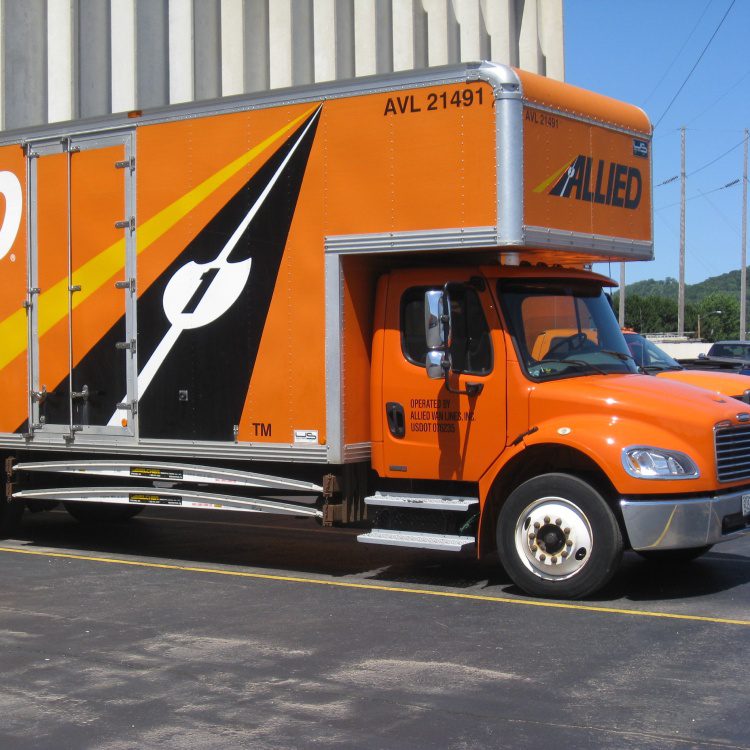
The Ultimate Step-by-Step Guide to Corporate Relocation to Onalaska, WI
December 6, 2024
Corporate relocation is a monumental decision, one that comes with challenges and opportunities alike. Onalaska, Wisconsin, offers a vibrant mix of strategic benefits and small-town charm, making it an excellent choice for businesses seeking a fresh start or expansion.
In this detailed guide, we’ll walk you through every stage of the process, from evaluating your needs to settling into your new location, ensuring your move is well-planned, smooth, and successful.
Why Relocate Your Business to Onalaska?
Relocating your business isn’t just about changing your address—it’s about seizing the opportunity to improve operations, access new markets, and position your company for long-term growth. Onalaska stands out as an ideal destination for several compelling reasons:
1. Strategic location
Onalaska’s central location in the Midwest gives businesses access to key markets without the costs associated with major metropolitan areas. It’s well-connected through major highways and transportation hubs, ensuring smooth logistics for goods and services.
2. Business-friendly environment
With supportive local policies, a growing economy, and an entrepreneurial spirit, Onalaska fosters an environment where businesses can thrive. The city had 503 businesses in 2017. Resources like the Chamber of Commerce and economic development agencies are readily available to help new businesses integrate seamlessly.
3. Skilled workforce
Onalaska is home to a talented workforce, with a mix of experienced professionals and young graduates entering the job market. Its quality of life and affordability make it an attractive place for employees to live and work, which can improve your ability to attract and retain talent. 96.6% of the population is at least a high school graduate or higher, with 39.4% of it holding a bachelor’s degree or higher.
4. Exceptional quality of life
Beyond the business advantages, Onalaska offers an appealing lifestyle. From scenic parks to excellent schools, it provides the perfect setting for employees and their families to settle down and thrive.
So, all set the move your business to Onalaska? Here are the steps you need to follow:
Step 1: Assessing Your Business Needs

The foundation of any successful relocation lies in understanding your business’s specific needs and objectives. A move without clear goals can lead to unnecessary disruptions and expenses.
Conduct a comprehensive needs assessment
Start by evaluating your current operations. What works, and what doesn’t? A detailed assessment will help you identify the features you need in a new location. Consider the following:
- ·Space requirements: Are you currently limited by space? Do you need specialized areas for production, storage, or customer engagement?
- Technology and infrastructure: Assess your technological needs, such as internet speed, power capacity, or specialized equipment.
- ·Workforce considerations: Analyze how your current staff will be affected by the move. Will the relocation make commuting easier? Is the new location close to amenities like public transport?
Align the move with long-term goals
Your relocation should serve your broader business objectives. For instance, if your goal is to expand into new markets, choose a location that provides better access to your target audience. If cost reduction is a priority, compare real estate prices, taxes, and utility costs.
Account for employee and client impact
Relocation can significantly affect your employees and clients. Consider:
- Offering relocation assistance to employees, such as moving stipends or flexible work options.
- Communicating the benefits of the move to clients, ensuring minimal disruption in service.
Step 2: Evaluating Locations in Onalaska
Finding the right location within Onalaska is critical. The decision impacts not just your operations but also employee satisfaction, customer accessibility, and future growth opportunities.
Research the commercial real estate market
Partner with local real estate agents who understand Onalaska’s business landscape. They can guide you toward properties that meet your needs and budget. Pay close attention to:
- Zoning regulations: Ensure your chosen property is zoned appropriately for your business activities.
- Proximity to key resources: Is the property near suppliers, logistics hubs, or customer clusters?
- Room for growth: Look for spaces that can accommodate future expansion or offer flexible lease terms.
Assess accessibility and amenities
Ease of access is crucial for employees, clients, and suppliers. Evaluate the property’s proximity to highways, public transit, and parking. Additionally, consider the surrounding amenities—cafes, gyms, and green spaces can enhance employee satisfaction.
Weigh the visibility factor
If your business relies on walk-in traffic or brand visibility, prioritize locations with high foot traffic or opportunities for prominent signage.
Step 3: Building a Detailed Relocation Plan

Relocation success hinges on meticulous planning. A well-thought-out plan ensures that every aspect of your move is accounted for, minimizing disruptions and unexpected expenses.
Set a timeline
Break the relocation into phases and assign deadlines to each task:
- Preparation phase: Conduct needs assessments, research locations, and finalize your budget.
- Packing and transition: Coordinate with movers, pack belongings, and prepare employees for the change.
- Execution phase: Oversee the physical move, ensuring that key systems (like IT infrastructure) are operational before employees arrive.
- Post-move activities: Organize the new space, update your business information, and evaluate the success of the relocation.
Create a comprehensive budget
A realistic budget prevents financial surprises. Include:
- Direct costs: Real estate expenses, moving company fees, and IT setup.
- Indirect costs: Employee relocation support, marketing for your new location, and potential downtime.
- Contingency fund: Allocate 10-20% of your budget for unforeseen expenses.
Assemble a relocation team
Designate a team to oversee the move, with representatives from IT, HR, and operations. Assign a relocation manager to coordinate all activities and serve as the central point of communication.
Step 4: Communicating with Stakeholders
Effective communication is vital to ensure a smooth commercial moving for everyone involved.
Internal communication
Keep employees informed with regular updates. Share the relocation timeline, explain how the move benefits the company, and address concerns through Q&A sessions or surveys.
External communication
Your customers and partners need to know about the move well in advance. Use multiple channels, such as email newsletters, social media, and press releases, to share details about your new address, operational changes, and timelines.
Step 5: Executing the Move

With plans in place, it’s time to put them into action.
Hire professional movers
Work with a moving company experienced in commercial relocations, like Piepho Moving and Storage. Verify their insurance, reviews, and expertise in handling specialized equipment.
Pack strategically
Label all boxes clearly, indicating their destination in the new office. Use secure packing materials for delicate or high-value items.
Test and set up IT systems
Ensure that internet, phone systems, and key infrastructure are operational before moving day. Test all systems thoroughly to avoid downtime.
Step 6: Post-Move Setup and Integration
The move isn’t complete until you’ve fully settled into your new space and integrated with the Onalaska community.
Optimize your new office layout
Design your new workspace with productivity and employee satisfaction in mind. Create zones for collaboration, quiet work, and relaxation.
Update your business information
Notify all relevant parties of your new address, including:
- Government agencies for licenses and registrations.
- Online directories like Google My Business.
- Clients, suppliers, and partners.
Celebrate your new beginning
Host an open house or a grand opening to introduce your business to the Onalaska community. Celebrate with employees to boost morale and mark the milestone.
Relocate Your Business to Onalaska With Piepho

Relocating your business to Onalaska is more than just a logistical challenge—it’s an opportunity to redefine and reinvigorate your operations. And Piepho is here to help you.
Since 1952, our family-owned business has proudly provided exceptional moving services, handling everything from long-distance relocations to business transitions with unmatched care and dedication.
Whether you’re moving across the state or expanding your operations, we’ll ensure a smooth transition so you can focus on building your future in Onalaska’s thriving community. Contact us today to get a free quote!




